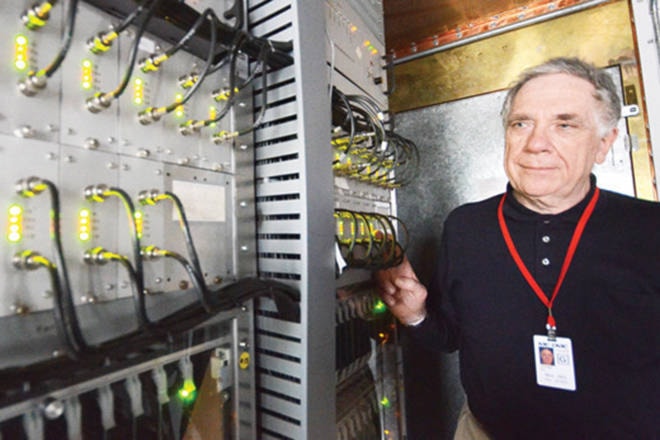This year we celebrate Canadaís 150th Birthday, and we recently celebrated the 100th Birthday of our National Research Council, which remains Canada’s premier science and technology organization.
The British North America Act of 1867 gave birth to a new national entity called Canada. That was Canada’s political birth, but there are other special events in the development of a nation that help define it. For example, knowing, through its own efforts, where its boundaries are, where it is on the surface of the Earth, and knowing what time it is.
When the French, and later the British came to what was to become Canada, there were attempts to set up observatories, to get as accurate as possible an idea of where exactly their forts and settlements were located. However, the first really accurate measurements were made in 1851 by William Brydone Jack, in New Brunswick. He built an observatory in Fredericton, and through precise astronomical observations and use of the telegraph, determined that Fredericton lies 66 degrees, 38 minutes and 21.5 seconds west of Greenwich, U.K. and that Fredericton local time runs 4 hours, 26 minutes and 33.4 seconds behind Greenwich Time. It was an amazing achievement.
Starting with this accurately-measured reference point he went on to map New Brunswick. Thanks to this work, New Brunswick became firmly fixed to the Earth’s surface, at a precisely determined location on the map. When New Brunswick became part of Canada on 1st July, 1867, that reference point became a national reference point for Canada. The country knew where it was and where its borders were through its own efforts.
However, as the years passed and government services became more nationally integrated, forming a network across the country, it became clear that a facility was needed that could review and refine the national time and position measurement systems. This led in 1905 to the opening of the Dominion Observatory, in Ottawa, with the mandate to manage and improve national position and time measurement. Canada’s first national time was distributed from that observatory. Every day since 1930, time messages have been broadcast on the radio: Canada’s shortest but longest-running radio program: “At the beginning of the long dash …” Having a firmly-established national position framework was a critical component in the many aerial surveys of Canada, which were made to fill in the huge blanks in the national map.
Our ability to measure time with great precision is equalled by our modern capability to measure distance and position. In the 1960’s Canada was the first country to perfect the radio astronomical technique of Very Long Baseline Interferometry. In addition to being useful for astronomy, it is useful for surveying. It makes it possible to measure the separation of points thousands of kilometres apart with millimetre accuracy. We can detect plate tectonics in action. We can monitor how geological forces are constantly moving the country and how they are changing its shape.
Soon after the Second World War, a new type of clock was developed. It depended upon atomic processes and ran completely independently of the stars, and is so accurate we can use it to measure the changes in astronomical phenomena. For example we can detect the gradual slowing of the Earth’s rotation, and the little speed-ups and slow-downs produced by earthquakes. These atomic clocks are now the basis of Canadian time. Today, keeping Canada ‘on-time’ is one of the services provided by the National Research Council. Now that we know exactly where we are and we know the exact time, Happy 150th Birthday Canada.
Venus lies in the dawn glow. After sunset Jupiter lies in the southwest and Saturn low in the south. The Moon will reach First Quarter on June 30.
Ken Tapping is an astronomer with the NRC’s Dominion Radio Astrophysical Observatory, Penticton.



